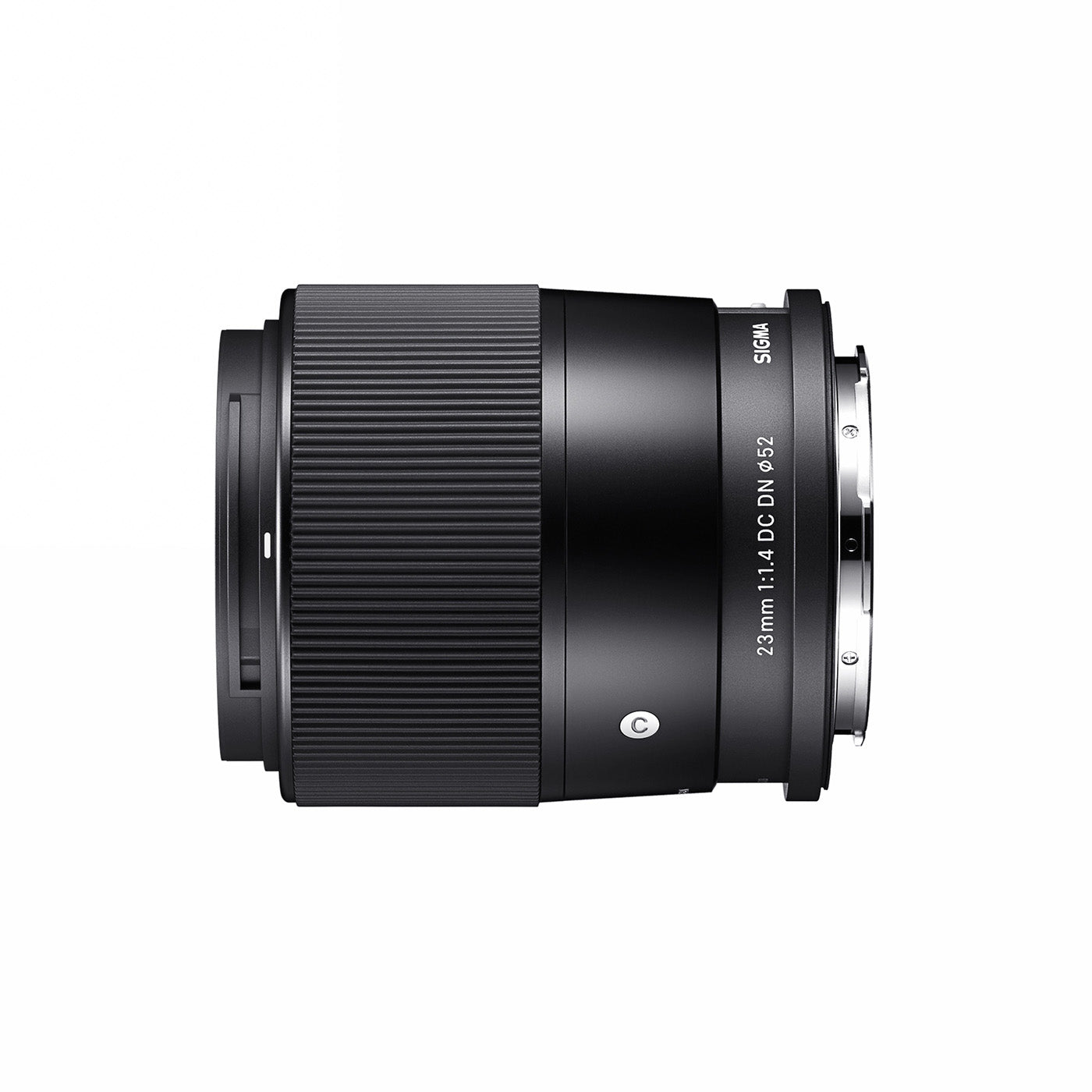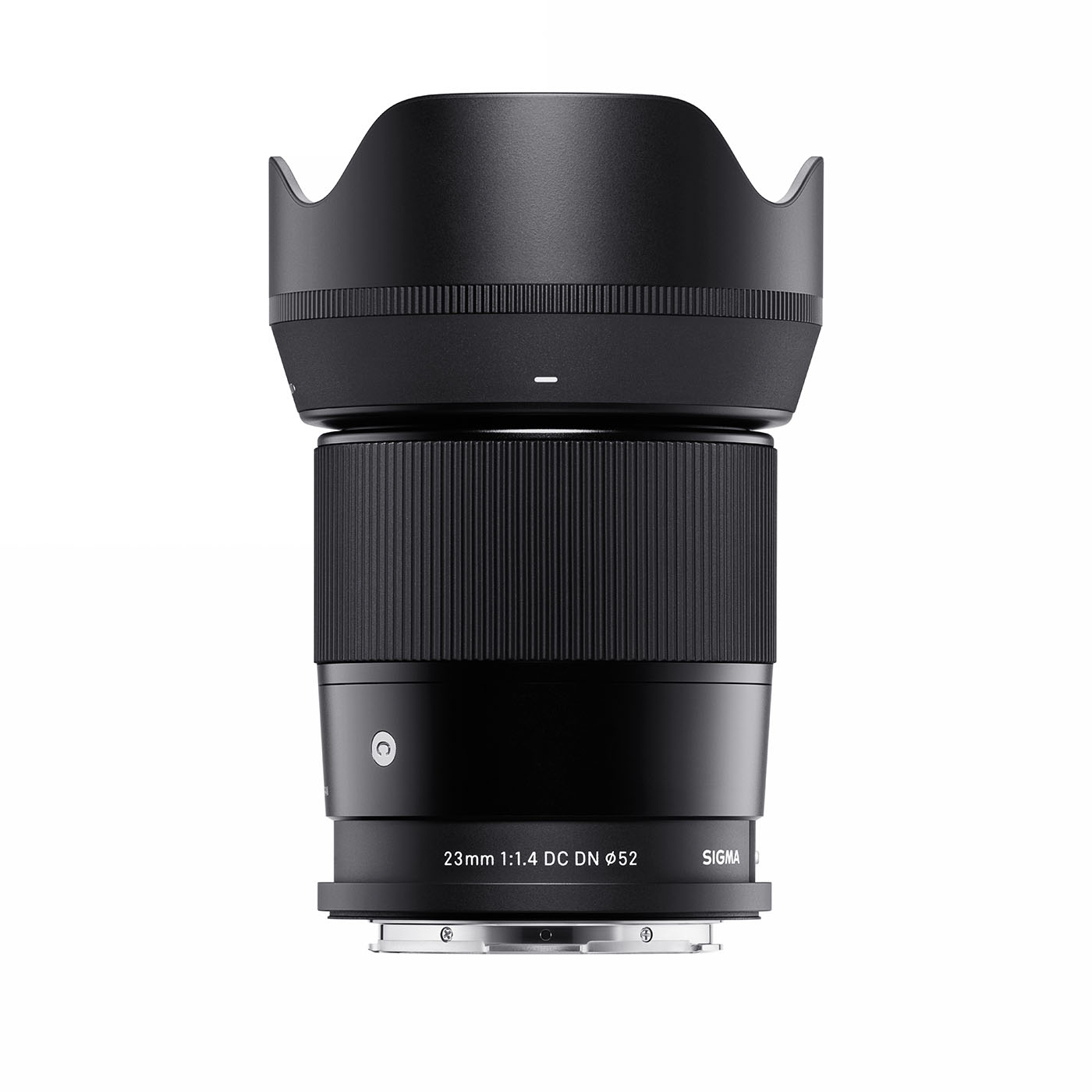Product Description
Sigma 23mm F1.4 DC DN Contemporary Lens for Sony E Mount
The Perfect Portable Wide-Standard Prime for Crop-Sensor Cameras
Fast, sharp, versatile, and lightweight, the Sigma 23mm F1.4 DC DN Contemporary Lens is designed specifically for Sony E-mount APS-C cameras. Offering an equivalent focal length of 35mm, it is a perfect wide-standard prime for street photography, travel, portraits, and landscapes.

Key Features
Versatile Wide-Standard Prime
- 35mm Equivalent Focal Length: Ideal for a range of creative applications, from travel to portraits.
- Bright f/1.4 Aperture: Excels in low-light conditions and delivers beautiful, shallow depth-of-field for smooth bokeh.

Exceptional Optical Performance
- Advanced Optical Design: 13 elements in 10 groups, including 2 aspherical and 3 SLD elements for sharp and clear imagery.
- Minimised Aberrations: Controls chromatic aberration, vignetting, and flare for precise results.
- Superb Edge-to-Edge Clarity: Maintains sharpness across the entire frame, even on high-resolution sensors.

Compact and Lightweight
- Weighing just 340g, the lens is portable and easy to carry for all-day shoots.
- Dimensions: ø65.8mm × 76.9mm, compact enough for travel and everyday use.
Durable Build
- Brass Mount with Rubber Seal: Offers durability and resistance against dust and moisture.
- Petal-Type Lens Hood: Minimises lens flare in bright lighting conditions.

Fast and Accurate Autofocus
- Stepping Motor with Inner Focusing: Delivers quick, smooth, and near-silent AF, suitable for both stills and video.
- Optimised for Modern AF Systems: Fully compatible with the latest autofocus technologies for precise results.

Low-Light and Creative Potential
- Ideal for Astrophotography: The bright f/1.4 aperture lets in plenty of light for night photography.
- Smooth Bokeh: Rounded 9-blade diaphragm creates beautifully blurred backgrounds, perfect for isolating your subject.

Specifications
- Lens Construction: 13 elements in 10 groups
- Angle of View: 63.4°
- Diaphragm Blades: 9 (rounded)
- Minimum Aperture: f/16
- Minimum Focusing Distance: 25cm
- Maximum Magnification Ratio: 1:7.3
- Filter Thread: 52mm
- Dimensions: ø65.8mm × 76.9mm
- Weight: 340g
>
Compatible Mounts: Sony E | L-Mount | Fujifilm X
The Sigma 23mm F1.4 DC DN Contemporary Lens for Sony E Mount offers the perfect blend of sharpness, portability, and speed. Whether you're shooting low-light landscapes, vibrant street scenes, or intimate portraits, this lens delivers stunning results in a compact and versatile package.


| Lens construction |
13 elements in 10 groups
|
| Angle of view | 63.4° |
| Number of diaphragm blades |
9 (rounded diaphragm)
|
| Minimum aperture | F16 |
| Minimum focusing distance | 25cm |
| Maximum magnification ratio | 1:7.3 |
| Filter thread | 52mm |
| Dimensions (diameter x length) |
ø65.8mm × 76.9mm
|
| Weight | 340g |
Payment & Security
Your payment information is processed securely. We do not store credit card details nor have access to your credit card information.
























